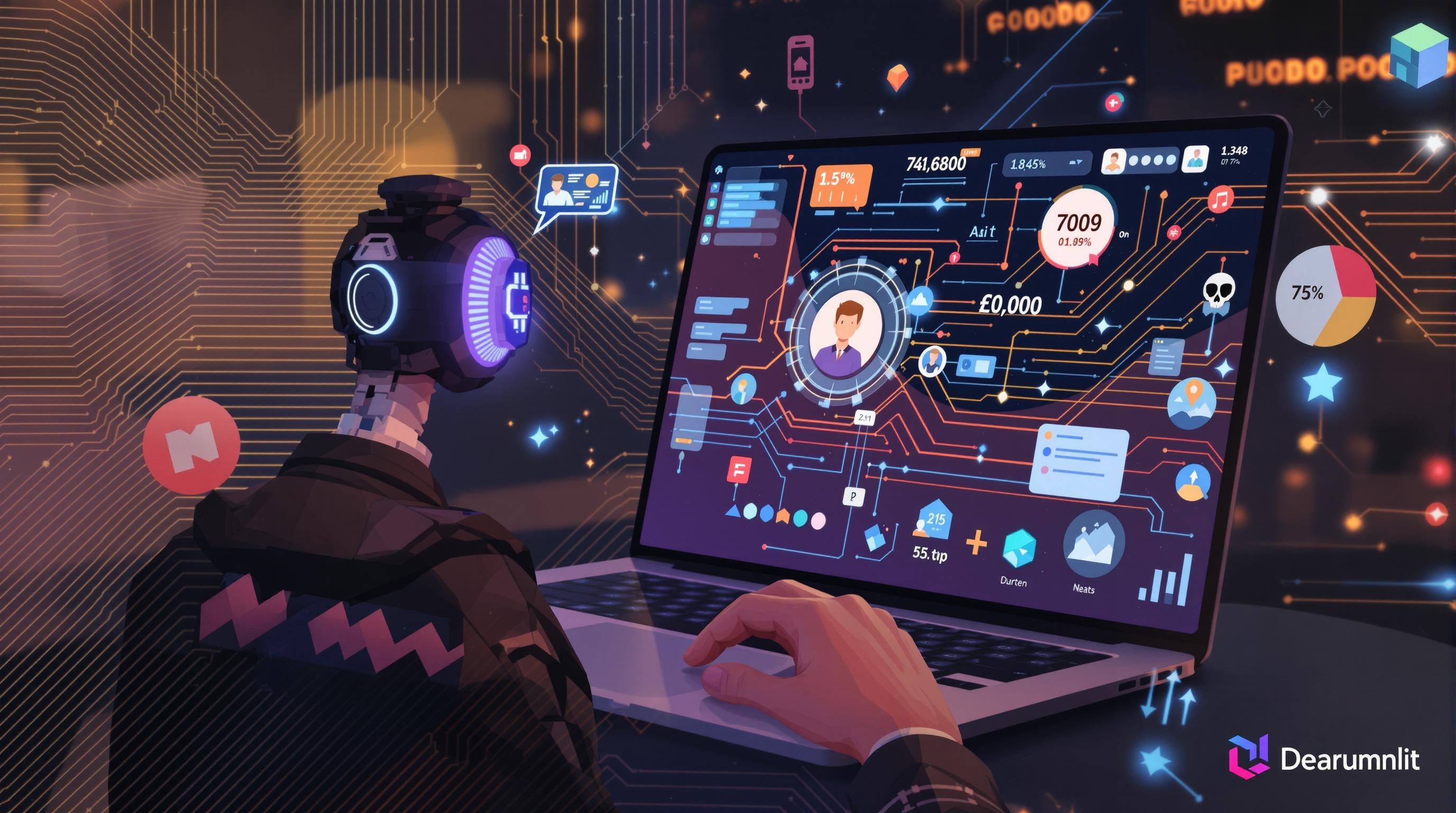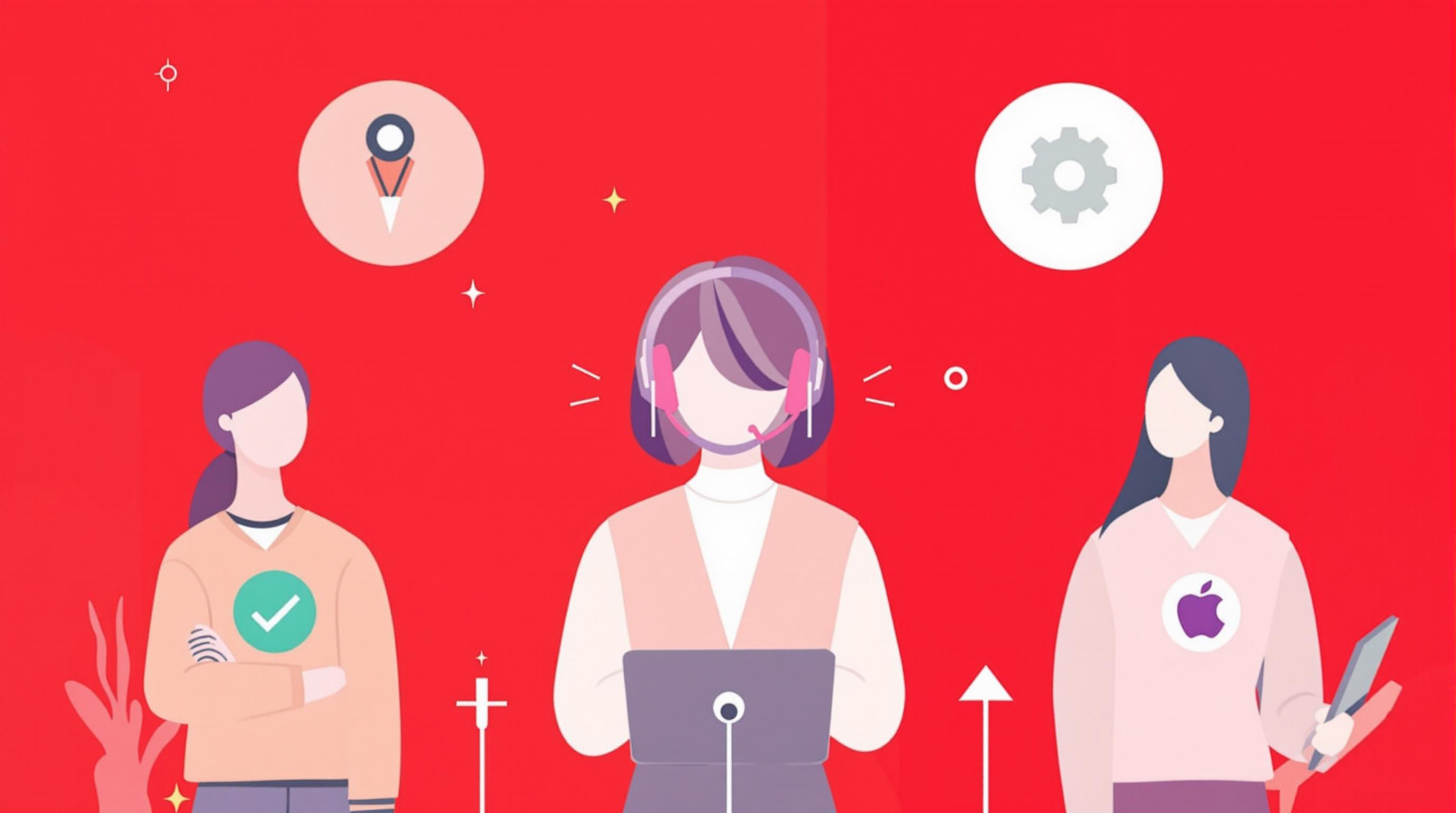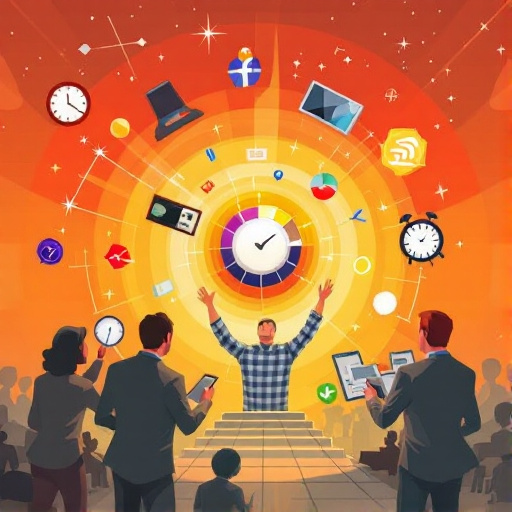Featured Articles
- 7 Game-Changing AI Recruitment Platforms Released Since 2019 That Are Redefining Hiring Efficiency
- Harnessing the Power of Micro-Experiences: A New Frontier in Employee Engagement and Retention Strategies
- Navigating the Quirks of Remote Teams: Unconventional HR Tips for Boosting Virtual Morale
- Top 6 Workforce Analytics Platforms Launched Since 2019: In-Depth Reviews and ROI Rankings for HR Leaders
- Top 8 Talent Management Tools Launched Since 2019: A Comprehensive Comparison and Buyer’s Guide
Harnessing the Power of Micro-Experiences: A New Frontier in Employee Engagement and Retention Strategies
Harnessing the Power of Micro-Experiences: A New Frontier in Employee Engagement and Retention Strategies
Micro-experiences are rapidly redefining employee engagement strategies, offering companies fresh avenues to boost retention and morale. By focusing on small, personalized interactions, organizations can foster a more connected and motivated workforce.
The Rise of Micro-Experiences in the Workplace
In today’s fast-paced corporate environment, it’s often the small moments that can make a monumental impact on employee satisfaction. As an HR manager with over a decade of experience, I've seen firsthand how the shift toward micro-experiences, rather than grand gestures, can create a more meaningful workplace. According to a study from Gallup, organizations that focus on employee experience can increase employee productivity by 12% and reduce turnover by 34% (Gallup, 2022). The truth is, a simple 'thank you' or a personalized note can have effects that far exceed their scale.
Understanding Micro-Experiences
Micro-experiences are those small, often spontaneous interactions that make team members feel valued and seen. Whether it’s a surprise coffee run, a spontaneous team-building adventure, or a small acknowledgment in a meeting, these experiences can significantly impact how employees perceive their work environment. They’re crucial for fostering a sense of belonging—something that’s increasingly important among younger generations. A survey by Deloitte revealed that 66% of millennials prioritize an engaging workplace over pay when choosing a job (Deloitte, 2023).
Story Time: A Company Transformation
Let’s delve into a real-life example: consider Zappos, the online shoe retailer becoming a textbook case for employee engagement. A few years ago, they shifted from a traditional hierarchical structure to a more fluid team-oriented approach, where employees were encouraged to share their thoughts openly. One of the most impactful changes they made? Introducing “random acts of kindness”—from sending a handwritten card to simply asking employees about their weekend. The result? Zappos boasted a staggering 75% employee retention rate, which is well above the industry average.
Why Micro-Experiences Matter
Imagine this: you walk into work, and a colleague greets you with a genuine smile and a small gift. It’s not a bonus or a promotion, but rather a thoughtful gesture that brightens your day. In this digital age, where communication sometimes feels impersonal, these micro-experiences can bridge that emotional gap. The importance of belonging cannot be overstated; research published in the Journal of Organizational Behavior suggests that employees who feel a sense of belonging are more engaged, leading to a 50% increase in productivity (Baumeister & Leary, 1995).
Integrating Micro-Experiences into Work Culture
So, how does one effectively start integrating micro-experiences into their workplace culture? It doesn’t require a huge budget or an overhaul of existing systems. Rather, it involves a thoughtful approach, such as the following:
- Personalized Recognition: Consistently acknowledge employees’ hard work through personal channels like handwritten notes or shout-outs in team meetings.
- Flexible Work Arrangements: Allow for remote work or flexible hours tailored to individual employee needs rather than enforcing a one-size-fits-all policy.
- Weekly Check-Ins: Implement casual dialogue sessions where team members can share thoughts and experiences, fostering deeper connections.
- Fun Rituals: Introduce quirky traditions like "tea time" or "backward meetings" that allow for unforeseen connection opportunities among coworkers.
The Fun Factor: Engaging Employees with Humor
Here’s a whimsical thought: what if the next team meeting started with an icebreaker that doubles as a dad joke contest? Imagine employees chuckling over the best punchlines about why computers are like air conditioners (they both stop working when you open windows!). A light-hearted approach can significantly lower barriers, allowing space for genuine discussions. This boosts engagement and fosters camaraderie among team members when they’re laughing together before diving into meetings.
Micro-Experiences Through Technology
Interestingly, micro-experiences have found a wonderful partner in technology. With various platforms available, companies can now send spontaneous gifts via apps like Coffee for Good or use Slack for real-time shout-outs. For instance, a recent study noted that 87% of employees value appreciation communicated through technology (Forbes, 2023). Virtual gifts, consistently sending emojis of appreciation, or even team e-cards can go a long way in amplifying the impact of micro-experiences.
Statistics That Speak
Let’s spout some numbers, shall we? According to a report by LinkedIn, 79% of employees who quit their jobs cite a lack of appreciation as a key reason for their departure (LinkedIn, 2023). It’s clear that organizations cannot afford to overlook the importance of micro-experiences. When companies foster an environment where employees feel appreciated, retention rates soar, with experts suggesting that a positive work culture can actually save businesses an average of $7,000 per employee in turnover costs.
Creating a Virtual Community
As many of us navigate hybrid work environments, cultivating a sense of community can get tricky. But fear not! Tools like virtual happy hours, online group challenges, or even a well-timed meme-sharing channel can enhance camaraderie and engagement. A company-wide initiative that encourages sharing personal updates or achievements can create micro-experiences that matter even in the digital sphere. Fun fact: during a recent trivia night conducted virtually, a team’s random knowledge of pop culture helped them bond—showing that even online interactions can yield meaningful experiences.
Assessing the Impact
Now, let’s talk evaluations. It’s crucial to monitor the effectiveness of micro-experience initiatives within your organization. Consider using employee surveys, one-on-one check-ins, or pulse surveys to keep a finger on the pulse of employee sentiment. By continuously asking for feedback, companies can refine their approach and undoubtedly bolster micro-experiences to keep them fresh, engaging, and resonant. Remember, adjustments based on feedback can elevate a good initiative into a transformative one!
Case Study: A Stellar Example
Let’s take the case of Google’s “grocery list” initiative. Employees were encouraged to submit ideas exclusively for micro-improvements in daily processes through an online platform. Some ideas included offering meals beyond standard 9 to 5 work hours or introducing an “inhale-exhale day” for stress management—days specifically designed to unwind. Within a few months, employee satisfaction scores soared, reflecting a 35% increase in overall morale. It’s clear that even the simplest ideas can produce remarkable results.
The Future of Employee Engagement
As we forge ahead into an increasingly interconnected future, embracing the power of micro-experiences can lead to heightened levels of employee engagement. By fostering a culture that values small moments of connection, organizations can create work environments where every team member feels appreciated and motivated to contribute their best selves. It’s time to put those massive annual parties on the back burner and shift the focus to what truly matters—recognition, fun, and connection!
Empower Your Workforce
In conclusion, if companies want to foster a workforce that’s not just retained but also engaged, the shift toward micro-experiences is the way forward. Effective engagement doesn’t need large budgets or grand gestures—small, thoughtful interactions can yield incredible results. Let’s embrace the game-changing potential of micro-experiences and reshape the landscape of employee engagement one moment at a time.
Your Next Move
As employees, you too have a role to play in this evolution. Start small by initiating personalized interactions with your coworkers, and watch how the collective energy shifts within your workplace. Whether it's organizing a spontaneous team lunch or sending a quick appreciation message, it’s the shared experiences that create lasting change. The future of employee engagement is here—are you ready to embrace it?




